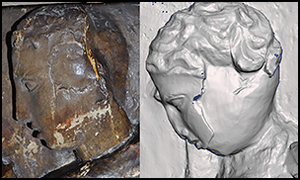Article contents
3D imaging of the Parthenon sculptures: an assessment of the archaeological value of nineteenth-century plaster casts
Published online by Cambridge University Press: 10 December 2019
Abstract

Intent on recording in situ ancient sculptures at risk of deterioration, nineteenth-century archaeologists were at the forefront of an ambitious campaign of plaster-casting. Today, these surrogates preserve details now lost from the originals, but evaluation of their accuracy is of vital importance. Some of the earliest such casts are those held by the British Museum. This article investigates the efficacy of three-dimensional imaging for determining the accuracy of these casts, assessing whether they preserve lost information and whether they can be employed as reliable surrogates for the originals.
- Type
- Research
- Information
- Copyright
- Copyright © Antiquity Publications Ltd, 2019
References
- 8
- Cited by




